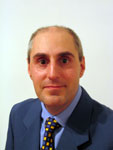From today's Times-On-Line
Hypnosis is best known as a means of inducing stage-show volunteers to act the fool but is also employed by some doctors and dentists. Its most startling medical use is in replacing general anaesthetics during surgery.
This technique, known as hypno-anaesthesia, has been practised for more than 150 years, according to the British Medical Journal. Only a handful of such operations take place in the UK but it is more widely used overseas. Sometimes in conjunction with a mild sedative or a local painkiller (see graphic), it induces a trance-like state in the patient and keeps their mind occupied. The advantages include reduced bleeding and a reduced risk of adverse reaction to anaesthetic.
Professor David Hatch of the Royal College of Anaesthetists says that while general anaesthesia is of little danger to most patients, some people, such as smokers and those with heart conditions or diabetes, have a higher risk of side effects. For them, hypnosis may be a solution. “It is not suitable for all patients but it has a valuable part to play and most anaesthetists would not be opposed. The fewer drugs you can use, the better,” Hatch says.
Hypno-anaesthesia has other advantages. Hypnosis patients do not need an artificial respirator and can often cooperate with the surgeon. During eyelid surgery, the doctor can check eyelid positioning before making final adjustments, for example. Some studies indicate that hypno-anaesthesia patients recover from surgery more quickly than other patients.
If no drugs are used, patients need to have had several hypnotherapy or home self-hypnosis sessions before surgery to acquire the ability to enter a deep trance. Whether hypnosis is an objective physiological phenomenon is debatable, but scientists have used brain imaging to show how its techniques can reduce the perception of pain.

1 comment:
In today’s ever increasing stressful socioeconomic environment the advantages of Medical hypnosis are being accepted by main stream medicine as a viable adjunct to conventional pharmacotherapy or other medical protocol.
Unfortunately, persistent myths, half-truths, and suspicions still surround hypnosis, which compel most people to continue to seek prescription medications or alternative procedures rather than hypnotherapy for certain problems like weight gain, smoking, nail biting, bed wetting, thumb sucking, test-taking, sports enhancement, certain addictions, pain issues, phobias, and disorders.
The troubling aspects of these Medications and procedures; they mainly concentrate only on the "effect(s)” of an issue,” while often having multiple side effects that may be excessive or even potentially fatal.
By contrast, Medical hypnotherapy safely helps decrease or even eliminates effect(s), while simultaneously assaulting the "cause" of the issue. It therefore, is important to understand, as the therapist helps the patient redirect or even eliminate negative habits, emotions, or perceptions, and/or raise pain threshold, self-esteem, and confidence issues, the patient is not treated with hypnosis but rather through hypnosis.
Although, over-the-counter books on hypnosis may be informative as to the scientific nature of the hypnotic phenomenon, and many Store bought CD's or internet sites can offer general repetitive response guided imagery, these methods usually have low efficacy long-term.
Choosing the right qualified hypnotherapist with proper training, credentials, rapport, and past efficacy is therefore very important. One-on-one sessions are most desirable over groups, in correcting conditioned habitual responses or medical conditions, as each patient has different and sometime multiple past and present sensitizing events.
As public awareness to the increased efficacy of Medical hypnosis is confirmed by scientific study the validity of medical hypnosis will benefit our stressful society.
Some uses for Medical Hypnosis pain management
Post a Comment